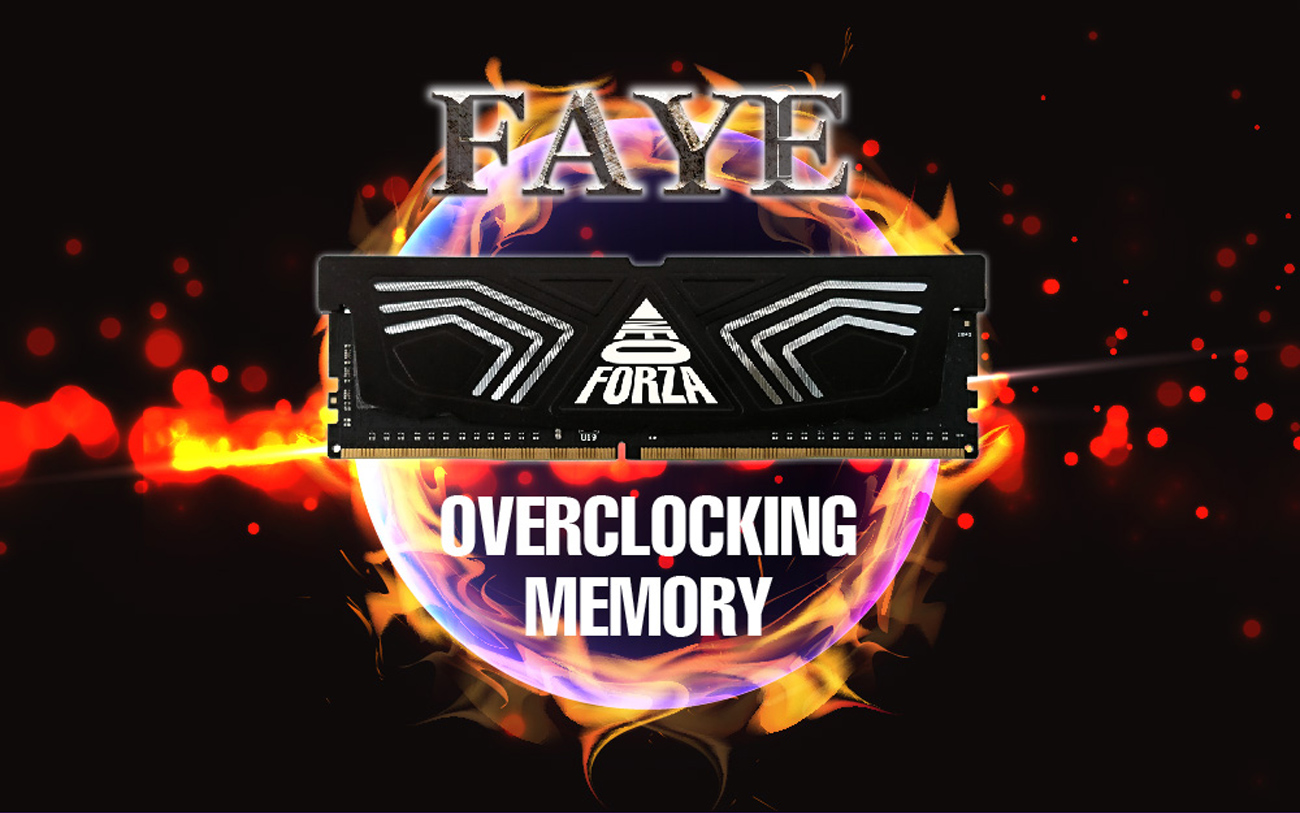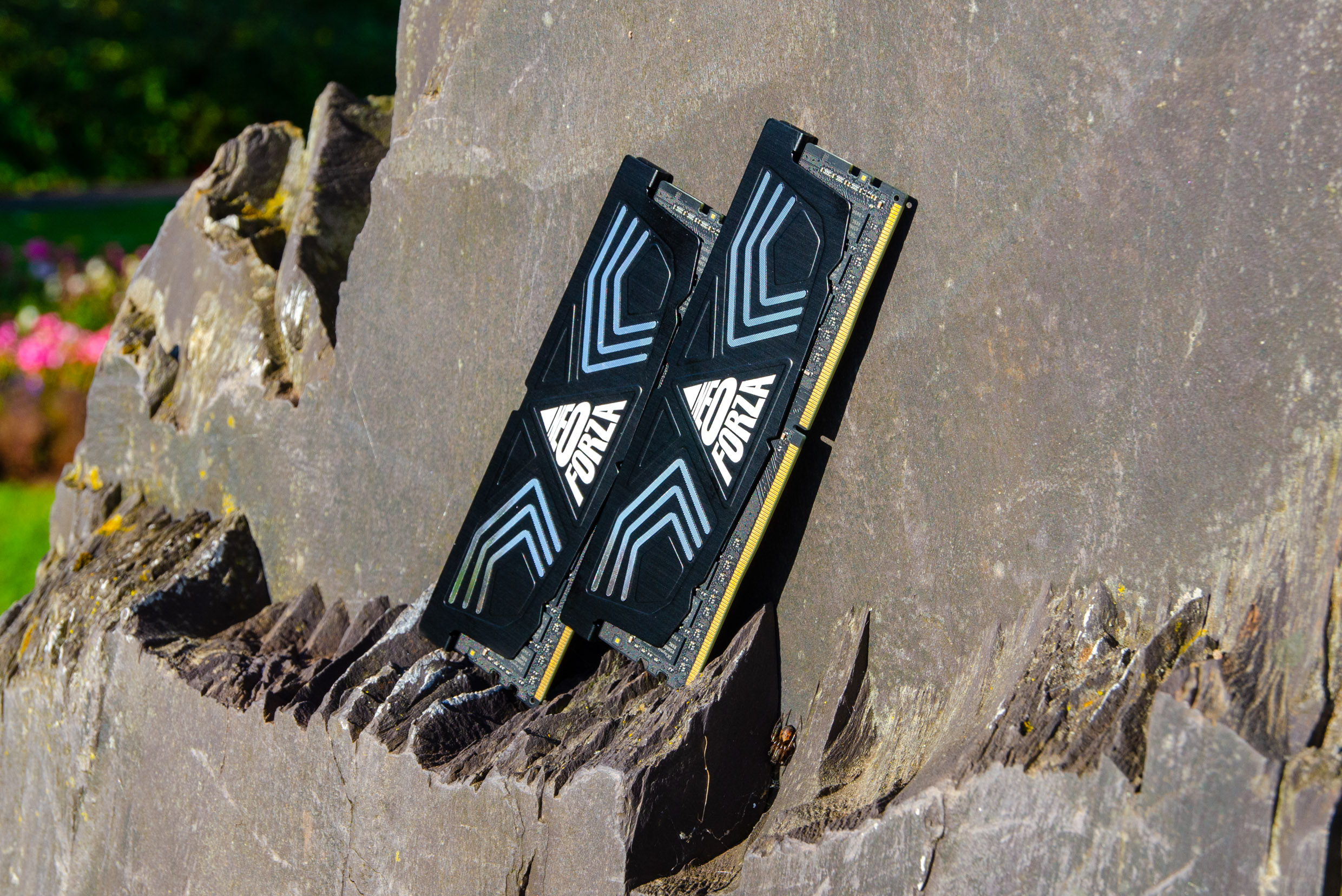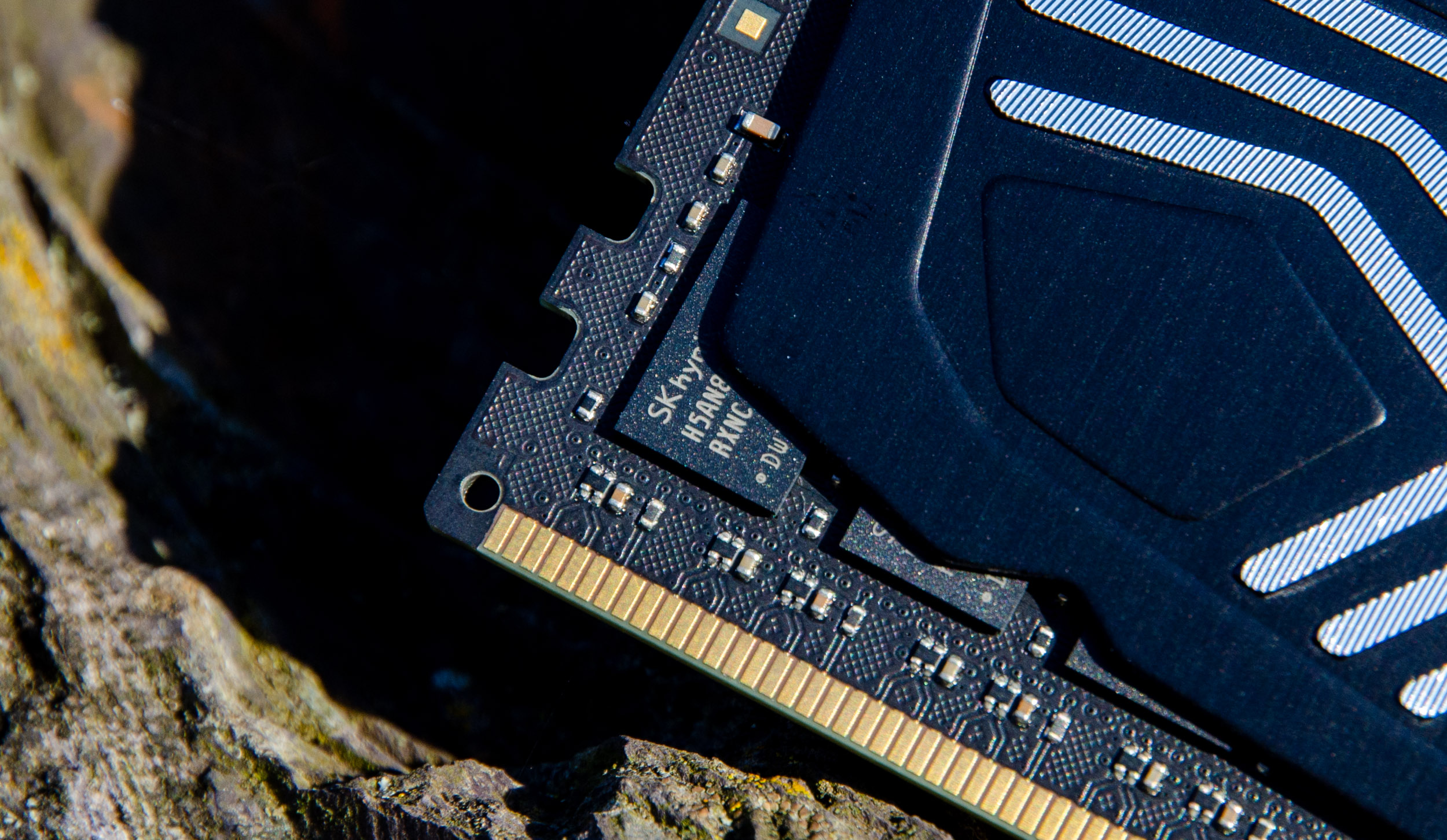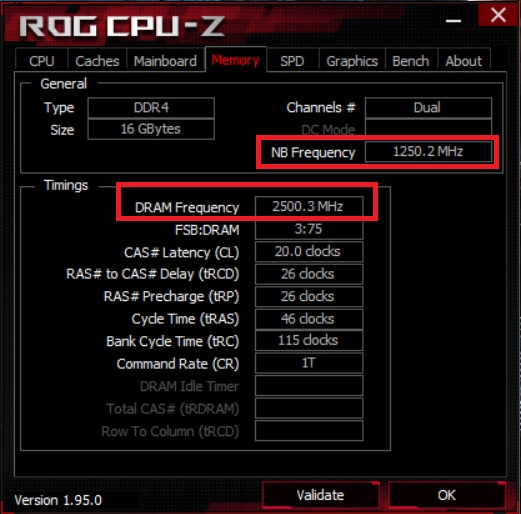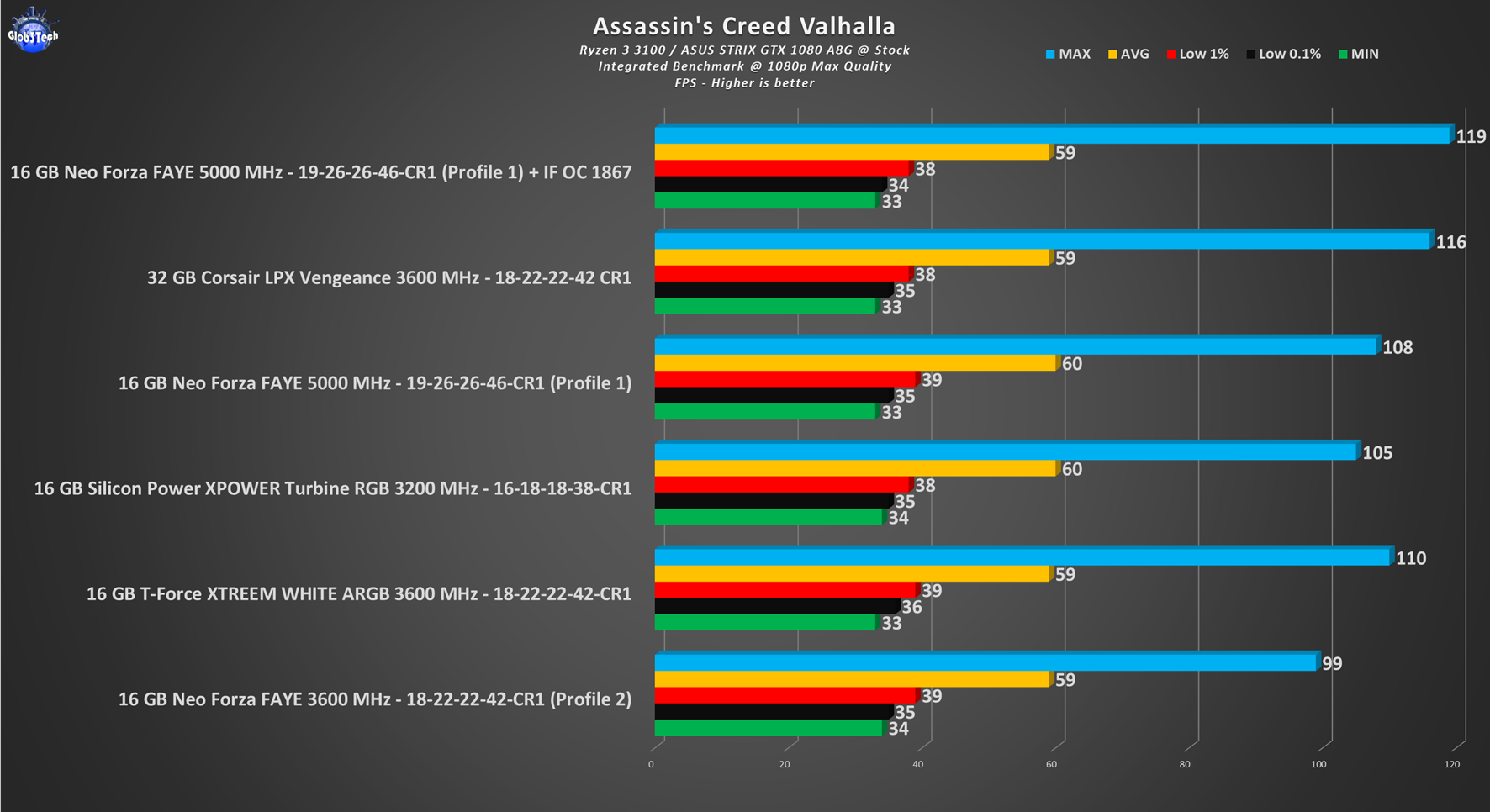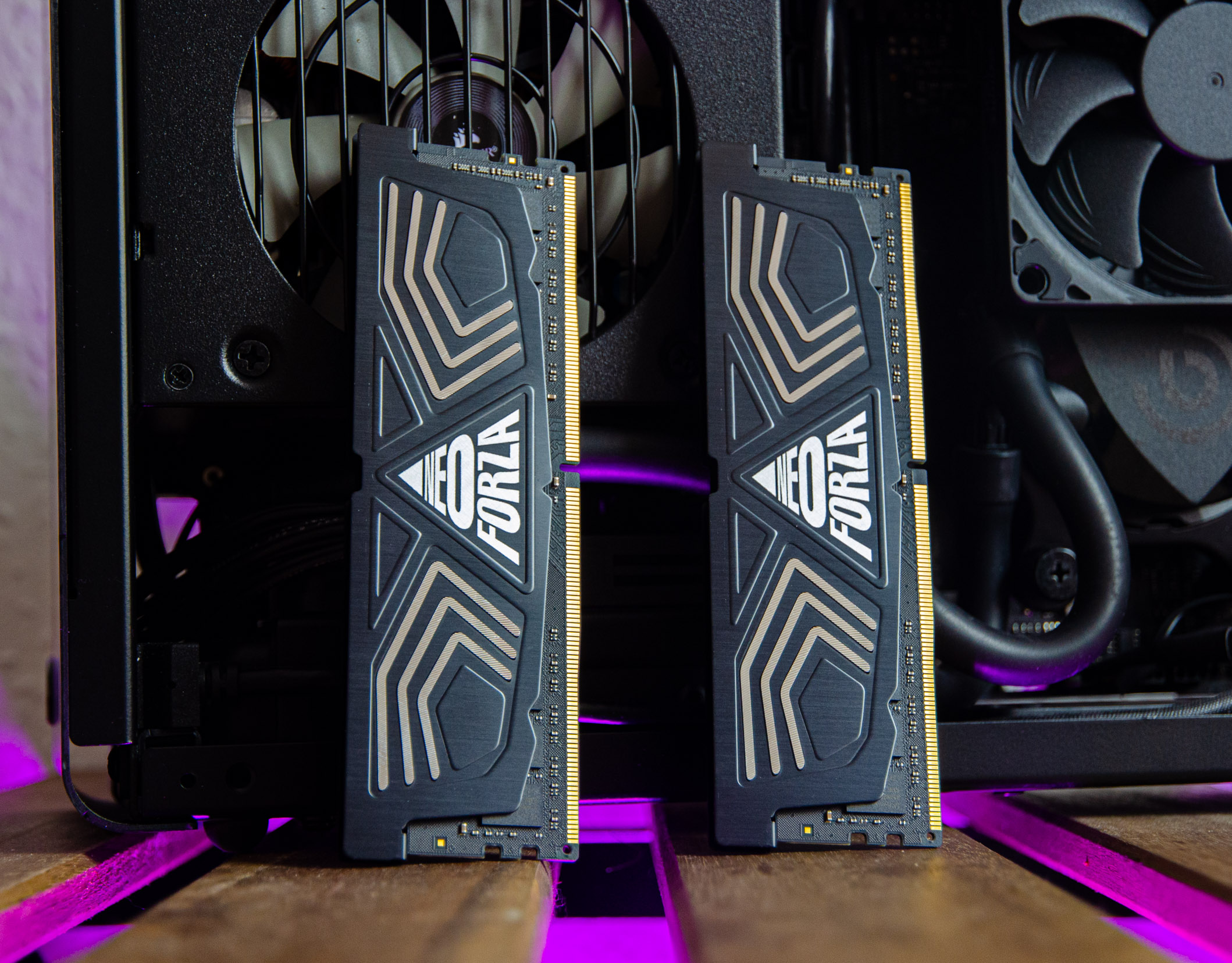
When it comes to DRAM, history has show us that just before the next technological leap occurs, we get some final iterations of that generation, like the last hurrahs. We are pretty much topping out now the DDR4 segment where companies are pushing the envelope with timings, frequency and even voltages.
One such example is today’s kit from Neo Forza, a 5000 MHz 16GB pair that runs out of the box at 1.6v! Crazy, I know, but wait until you see the price because this is where the main focus should be. Also bear in mind that not long ago Corsair was charging over $1000 for something similar.
They started out as a I/C design house, after which they deployed DDR4 solutions. With that, they became OEM house for international brands for the past 15 years. They take pride in streamlining their wafer screen processes and basically obtaining multiple timings for any frequency. Thus their slogan “Capacity is Power, Speed is King” makes perfect sense. Meet Neo Forza, a new force in the gaming market.
Prices and Availability
The retail price for our test sample is around $149.99 which will be found on Newegg.com for now, until the global crisis with semiconductors will be remedied. This is really good value considering we are talking about out-of-the-box 5000 MHz CL19 16GB memory kits, a spec that Corsair was asking $1200 for an exact kit that only had one point tighter in the timing sequence!
Worth mentioning that the FAYE range offers a lot of variety to choose from, we are talking about kits starting from 8GB all the way to 64GB and speeds from 3000 to 5000 MHz, in single, dual or quadruple DIMM kits.
*03.09.21 Update – The video review is live as well!*
Presentation and Specification
*Courtesy of their website.*
Neo Forza Faye DDR4 overclocking memory is designed with eagle wing inspired appearance. Symbol of sharp observation. Great performance for gaming application. Faye provides excellent cooling performance, as well as great stability whether you are on the battlefield gaming or trying to achieve higher benchmarks while overclocking.
Specs:
* Module Type: 288 Pin Unbuffered DIMM Non ECC
* Capacity: 8GBx2
* Frequency: 5000MHz
* CL-Value: CL19-26-26-48
* Voltage: 1.60V
* Heat Sink: Aluminum heat-sink
* Warranty: Lifetime Warranty
Visual Inspection and Installation
*Since we already covered the 4000 MHz variant of this kit and because they look 100% identical on the outside, let’s spice things up a bit and change the scenery.*
They come shipped in a transparent plastic clamshell so you can see the memory modules inside.
The overall theme is as minimal as it gets and there is just a small quick description on the back regarding the highlights of the FAYE kit.
Presenting the 16 GB (2x 8GB) 5000 MHz (!) CL19 FAYE DDR4 RAM kit in the all-black aluminium heatsinks. They have a very cool and abstract design for the heatsink, reminiscent of an eagle which spreads its wings. The Neo Forza logo is smack in the middle and has this very interesting 3D effect.
Also the heatsinks are airflow optimised with this open top design that will speed up the cooling process. Height wise, they are around 43mm.
They use a 10-layer PCB with memory chips made by SK-Hynix. The exact part number for the flash is H5AN8G8NFR-VKC.
The opposite side houses the information sticker with all of the main specs like capacity, timings and serial numbers.
If you are after a stealthier build, well, these FAYE kits are absolutely perfect for such a scenario.
Testing Methodology
We will employ a run of synthetic benchmarks at their X.M.P/D.O.C.P value of 5000 MHz for 1.60v @ CL19-26-26-48.
Regarding overclocking, there is not much you can squeeze out of them on regular (passive) air cooling since they are already maxed out fresh out of the box. To push them further will require 1.7v which is risky (at least on our AMD platform). We also tried some tighter timings like CL18-24-24-44 but not much luck for complete stability even at 1.65v. Thus we will tinker with another key feature from AMD’s Ryzen CPU series – the Infinity Fabric.
Also do note that in the upcoming desktop screenshots in CPU-Z, for some reason it registers the first sequence of the timings with a value of 20 instead of 19. Another interesting observation to make is that they have two built in X.M.P/D.O.C.P profiles, with the second one reading 3600 MHz CL18-22-22-42 @ 1.35v.
Furthermore, let’s talk about AMD’s Infinity Fabric which is very important to the Ryzen 3000 series and above (also our testing CPU). Basically AMD showcased its memory suggestions when the new CPU range was launched, showing that DDR4-3600 is the sweet spot, because the memory frequency and infinity fabric frequency (which manages info inside the processor) were synchronized. Going above DDR4-3600 (or DDR4-3733) would cause the Infinity Fabric to run at half (2:1 mode), effectively making it 1800 MT/s.
But with our 5000 MHz testing kit, this means that the Infinity Fabric needs to run at 2500 MT/s for optimal performance for the perfect 2:1 mode. To double check this, most of the recording software will read the Infinity Fabric as the “NB frequency”. This means if that value is equal to the DRAM frequency, then we know that the Infinity Fabric and the RAM are running in the coveted 1:1 mode.
Fact confirmed by the 2nd 3600 MHz prebuilt profile in this Neo Forza FAYE 5000 MHz kit. It’s displaying 1800 MHz because we know that DDR stands for Dual Data Rate and thus we have to divide the 3600 MHz by 2.
Now for the 5000 MHz kits, since it’s running in 2:1 mode, we read 2500 MHz for the DRAM frequency (2×2500=5000 MHz) but the NB frequency (which is our Infinity Fabric – or FCLK in the bios) is reading 1250 because it’s the 2:1 mode.
Basically the higher the speed of the RAM, the lower the performance of the Infinity Fabric after the key 3733 MHz threshold. Now, the question comes: can we modify the FCLK? Absolutely but most Ryzen 3000 CPUs will top out at 1800 MT/s with very few doing 1900 MT/s.
This may cause instability in the system since it may cause some desynchronization in RAM latencies and some blue screens, in addition to increased latencies of RAM. Even the BIOS in this ASUS board informs you about this.
Beyond 1867 MT/s it will not boot in our case, so let’s see how this will affect the overall performance.
The last point to mention here is that we have updated the bios for the motherboard to the latest stable final variant which is 2407 (from 24/07/2021) and the main testing game (Assassins Creed Valhalla) to its latest patch – thus our tests for today will only include the results versus only a couple of competition kits, since we can’t reuse the results from the older graphs since those kits are no longer available to be retested.
Hardware used:
– CPU: AMD Ryzen 3 3100 AM4
– CPU Cooler: Asetek 645LT 92mm AIO
– Motherboard: ASUS ROG STRIX B550-i Gaming mITX @ BIOS 2407
– RAM: 64GB Neo Forza MARS RGB 3200 MHz CL16
– Boot SSD: Silicon Power 2TB UD70 M.2 Gen3x4 QLC PCIe NVMe 1.3
– Video card(s): ASUS GTX 1080 STRIX A8G
– PSU: Corsair SF750 SFX Platinum
– Case: DAN A4-SFX V4.1 ITX
– Case fans 92 mm: Noctua NF-A9x14 HS-PWM.chromax.black.swap
Competition RAM:
– 32GB DDR4 Crucial Vengeance LPX 3600 MHz CL18
– 16GB DDR4 Silicon Power XPOWER Turbine RGB 3200 MHz CL16
– 16GB DDR4 Team Group XTREEM WHITE RGB 3600 MHz CL18
Software:
– OS: Windows 10 Pro x64 Version 21H1
– Ryzen Master v2.9.9 – AMD’s proprietary overclocking and control utility
– CPU-Z v1.95 – To verify the CPU’s and RAM’s statistics
– 7-zip v19 – A popular file archiver with a built benchmark tool
– Aida64 Extreme v6.20 – Memory analysis and Benchmark suite
– Geekbench Pro v5.2.5 – Great overall benchmark suite of tests
– Cinebench R20 – The new revised version optimised for the newer multi-core CPUs
– 3D/Game(s) – Assassin’s Creed Valhalla set at FHD, with everything at Max quality Settings, no V-Sync
– NVIDIA Drivers – 471.68
Testing, Results and Analysis
Let’s start with the CPU intensive benchmark – Cinebench’s R20. This is not a direct test for RAM but more an indirect help to the CPU to get better results. We have 3 main scenarios for the Neo Forza kit so from left to right: Profile 2 (3600 MHz CL18), Profile 1 (5000 MHz CL19) and the OC for the Infinity Fabric with the RAM at 5000 MHz CL19. We see that R20 takes advantage of the scaling in the raw speed.
Next up is the integrated memory benchmark from AIDA64 so we can inspect the overall read, write and copy bandwidth. There is a noticeable increase primarily in the copy test as we go up in frequency with some mixed results in the read and write but the main penalty is the latency since it’s a known fact that OC’ing the Infinity Fabric will affect negatively the latency.
Introducing a new test in our benchmark suite, 7zip which is a popular file archiver with a built benchmark tool. It will give us an overall performance index measure din MIPS (million instructions per second) which measure the compressions and decompression capability. Things scale here reasonably well.
The last synthetic test comes from Geekbench which gives us an overall performance index for both single and multi core scores. The results now are the exact opposite from what we saw in the previous tests and the best numbers come from the second built in 3600 MHz CL18 profile.
Now for a gaming session, one benchmark run in the latest Assassin’s Creed title, Valhalla. With games, the numbers only tell a part of the story so please check the video so you can see the actual fluidity since there isn’t much difference in this title beside the max peak FPS numbers with all of the tested kits (hence why the graph is in no particular order).
Conclusion
Make no mistake, this is a niche product at least on the AMD platform, where the law of diminishing return applies because of the way the Ryzen 3000 and 5000 series are built and how they interact with the RAM via their Infinity Fabric. Memory is always about the fine balance between frequency and timings, a fact that’s polarized further on AMD’s tech. There will be some gains depending on certain games and maybe on the Intel platform but the point of this kit it’s not about bragging rights, it’s about having fun. The asking price is the name of the game since you can own a kit that will make you smile and experiment.
The good:
+ 5000 MHz out of the box
+ Two built in X.M.P/D.O.C.P profiles
+ Airflow optimised aluminium heatsinks
+ Lifetime warranty
+ Perfect for a stealth build
The bad:
– Niche product with (minimal) real world gains depending on application and game, at least for AMD’s 3000 series
Glob3trotters “Editor’s Choice” Award 5 out of 5



